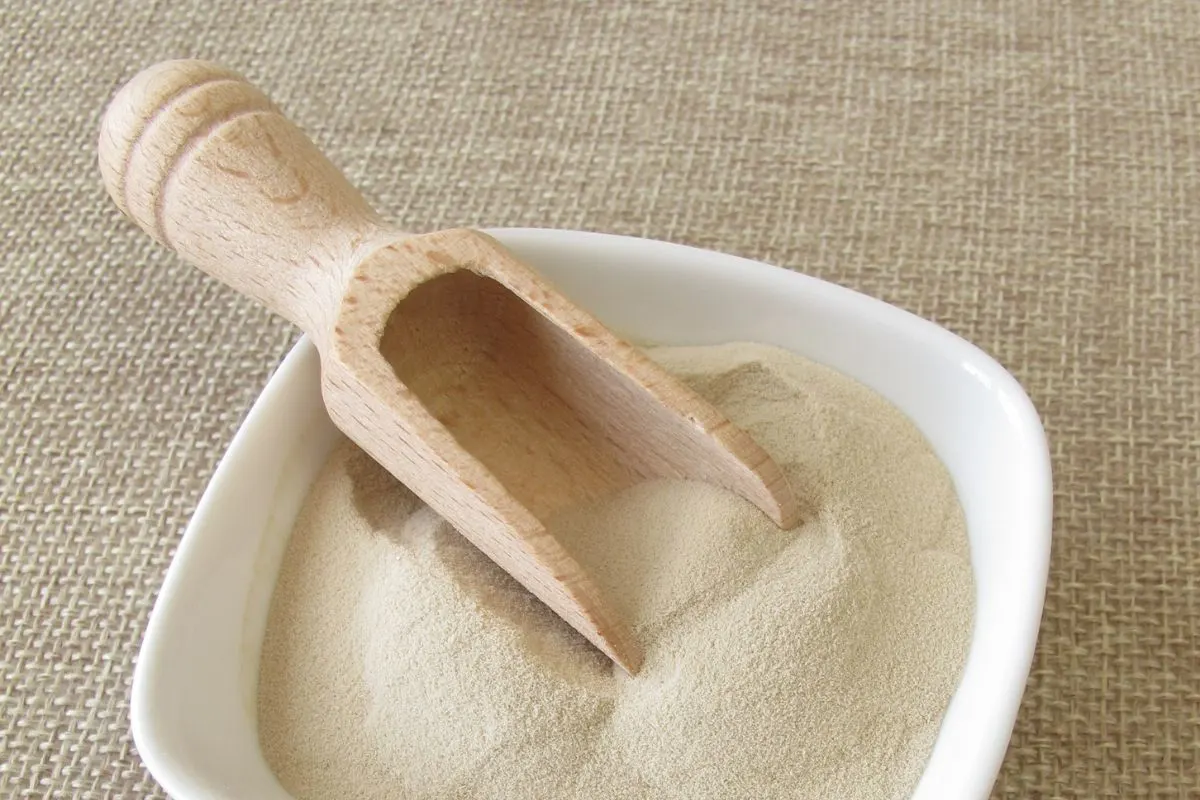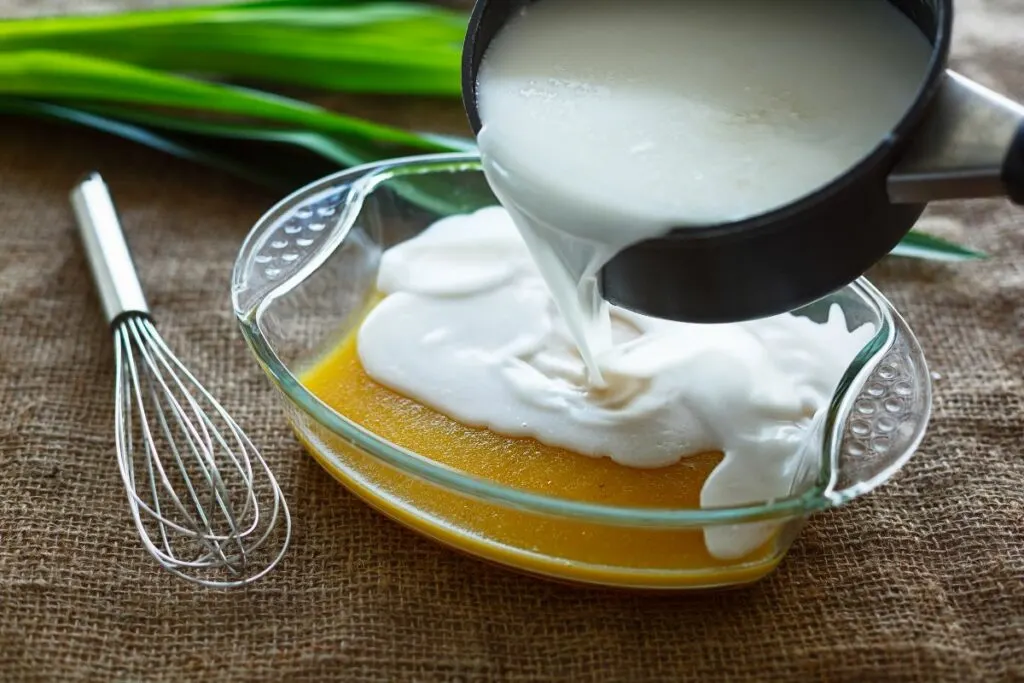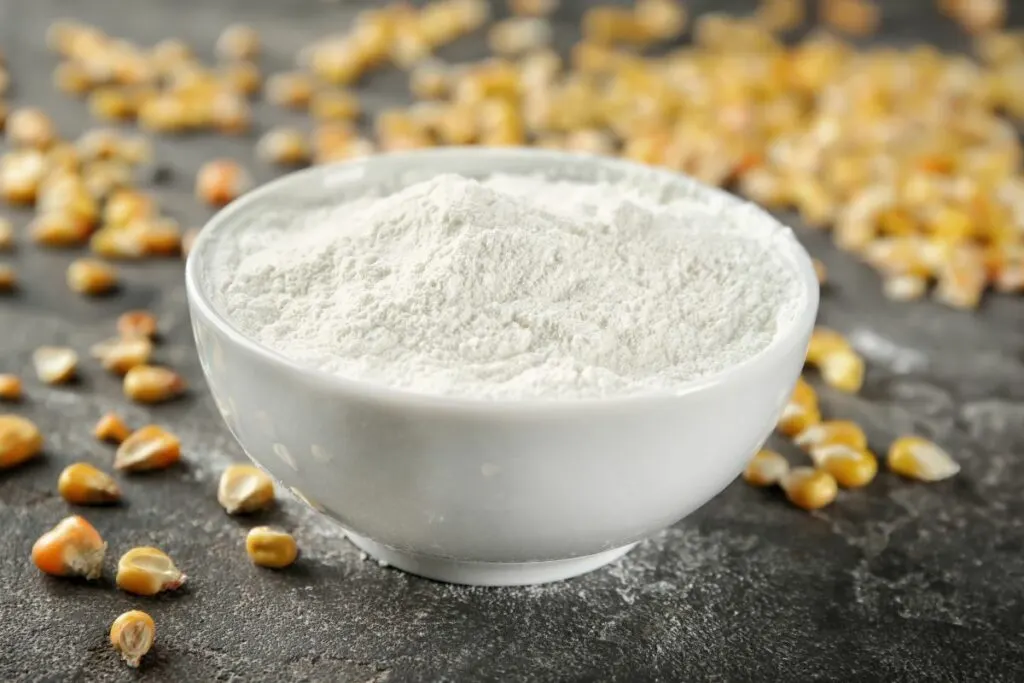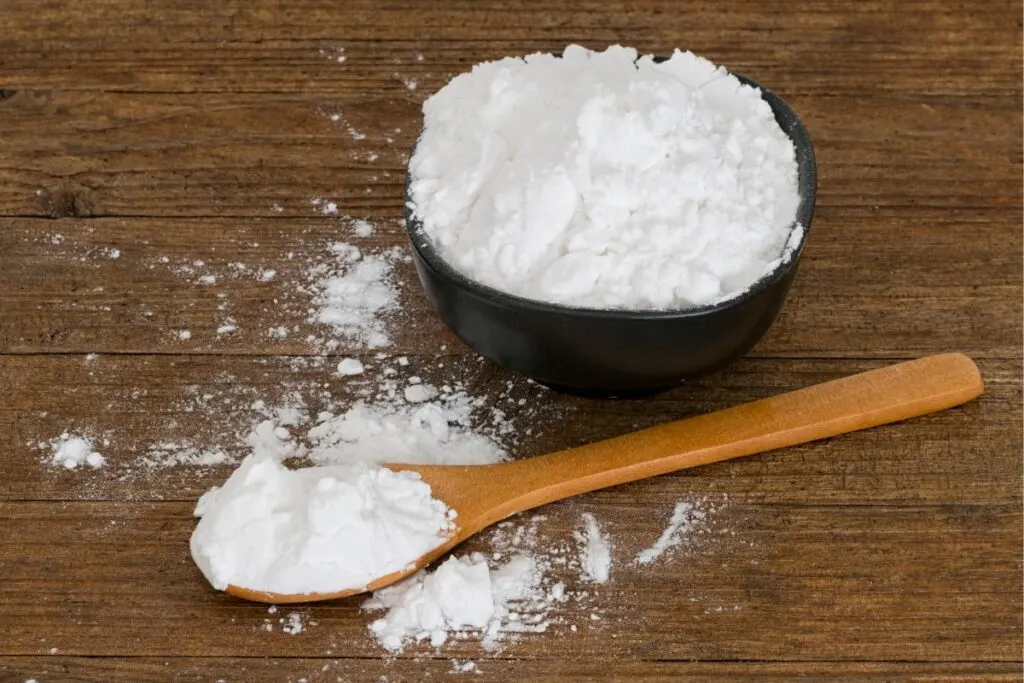Agar-agar is one of the best vegan ways to thicken sauce, gravies, and just about everything you want to swap gelatin for. If your recipe calls for gelatin, substituting it with agar-agar is probably the easiest option. But what happens when you run out? Well, I’ve got several of the best agar-agar substitutes for you.
You can substitute agar-agar for cornstarch, tapioca starch, flour, and arrowroot starch. But this isn’t all! There are even more agar-agar swaps I’ve got to share with you. So, let’s jump right in!

Jump To
🤷 What is Agar-Agar Powder
Agar-Agar powder is a vegetarian and vegan-friendly substitute for gelatin. It’s derived from red algae and is commonly used in Asian cuisine for its gelling properties. Agar-Agar powder is odorless, tasteless, and has a neutral flavor profile. It has a higher gelling strength than gelatin, making it a more potent thickener.
🆚 Agar agar vs Gelatin
Agar agar is a plant-based alternative to gelatin derived from seaweed. While gelatin is a thickener derived from animal collagen, agar agar is plant-based (vegan) and sets at a higher temperature. Agar-agar also requires different preparation techniques and has stronger setting properties compared to gelatin.
📌 How to Use Agar-agar Powder
Vegan Desserts: Agar agar is commonly used to set and firm up vegan desserts like panna cotta, mousses, and custards, offering a gelatinous texture without using animal products.
Fruit Jellies: Create flavorful fruit jellies by combining agar agar with fruit juices. Pour the mixture into molds to set it into delightful, translucent treats.
Gummy Candies: Make your own gummy candies by dissolving agar agar in fruit purees and sweeteners. Pour the mixture into candy molds for homemade, vegan-friendly gummies.
Thickening Agent: Agar agar is one of the best methods to thicken without cornstarch or flour. , soups, and gravies, offering a vegetarian alternative to animal-based thickeners like gelatin.
Preserves and Spreads: Use agar agar to set homemade fruit preserves, jams, or spreads, providing a gel-like consistency without the need for pectin or gelatin.

💡 8 Best Agar-Agar Substitutes
Unflavored Gelatin
The most common non-vegan alternative for agar is gelatin. Already available in many homes, gelatin is the boiled form of collagen (the connective tissues of animals), often from cows. It’s a flavorless, colorless, and clear protein used to thicken, stabilize, and bind desserts. To use unflavored gelatin, sprinkle it into cold water to let it bloom before adding it to your hot cooking or mixing liquid. Use a 3:1 ratio.
Cornstarch
Cornstarch is one of the best choices when looking for a thickening agent. It’s readily available and easy to swap as a thickening agent for gravies, soups, and sauces. This alternative is a highly starchy white powder extracted from the center of the corn kernel and provides stability and some texture. The starch can’t perform well in recipes with high acidity. To use cornstarch, make a slurry with 2 teaspoons of cornstarch and cold water to substitute for each teaspoon of agar-agar.

Tapioca Starch
This popular gluten-free flour is made from the starch of cassava root and makes for a great replacement for agar-agar. It works well as an allergy-friendly thickener for sauces, soups, cold desserts, and stews, though it does need high heat to activate completely. It also won’t produce the same gelatin consistency as agar-agar but will lend a similar thickness. Just use tapioca starch in a 2:1 ratio when replacing agar-agar.
Flour
Making it onto our list along with cornstarch is another pantry staple. White flour is the ideal thickener for rich and creamy sauces and is used in many, if not most, baking recipes. Flour doesn’t produce the same glossy shine as cornstarch and has less of the thickening power of agar, but still, it can be used as an easy swap in a pinch. Make sure to use a slurry and cook it for at least 30 minutes to properly “cook” the flour flavor out. Use this agar-agar replacement in a 2:1 ratio in your recipe.
Arrowroot Starch
Another neutral-tasting swap for agar-agar is arrowroot starch. This starch is extracted from the roots of the arrowroot plant, Maranta arundinacea. It’s gluten-free, easily digested, and can tolerate acidic ingredients and prolonged cooking better than tapioca flour. It’s one of the best ways to thicken gravy, sauces, soups, and puddings. This starch also doesn’t lend a murky color to your dishes, so you can use a 1:1 substitution ratio.

Pectin Powder
Pectin is one of the most suitable vegan replacements for agar-agar. It’s a naturally occurring fiber found in the inner skin of fruits and vegetables and used for thickening foods, medicine, and sweets. It’s actually responsible for giving these sweet condiments their mildly jelly-like consistency, including some applesauce substitutes. Pectin does have sugar added to it, so skip using it in savory dishes. You can use this in a 3:1 ratio.
Xanthan Gum
Xanthan gum is a vegan-friendly and gluten-free alternative to agar-agar. This polysaccharide is made by fermenting sugar with a specific bacteria (from which it gets its name) and is quite highly processed. To use xanthan gum as a substitute for agar, dissolve 2 parts powder in 1 part water to form a gel, and then stir the liquid into your recipe. You can stir it into the liquid directly when cooking a recipe. It’ll thicken water-based liquids at any temperature without the need to cook them.

Guar Gum
You’ve likely seen guar gum used to thicken and stabilize foods, including baked goods, soups, stews, sugar-free salad dressings, jello, and even dairy products like milk. So, it’s already a fantastic substitute for agar agar. It has an odorless and somewhat bitter taste and is also gluten-free. To use it, simply dissolve a pinch of guar gum in water and then add it to your recipe. This alternative thickens quickly, so use it sparingly.
🧐 FAQs
Agar agar can be purchased at various locations, both in-store and online. Many well-stocked grocery stores, health food stores, and Asian supermarkets carry agar agar powder or flakes in the baking or specialty foods section.
The amount of agar-agar needed depends on the desired texture and the specific recipe, but as a general guideline, you typically use around 1 teaspoon of powdered agar-agar to set 1 cup of liquid.
Pectin powder, carrageenan, and konjac powder are excellent substitutes for agar agar.
What is the conversion ratio when substituting gelatin for agar agar?
When substituting gelatin for agar agar, the conversion ratio is usually 1:1. This means that if a recipe calls for 1 tablespoon of agar agar, you can substitute it with 1 tablespoon of gelatin.
Guar gum has a similar texture to xanthan gum powder, but it’s not as strong. If you want to use guar gum as a substitute for agar agar, you may need to use more of it to achieve the same effect.
